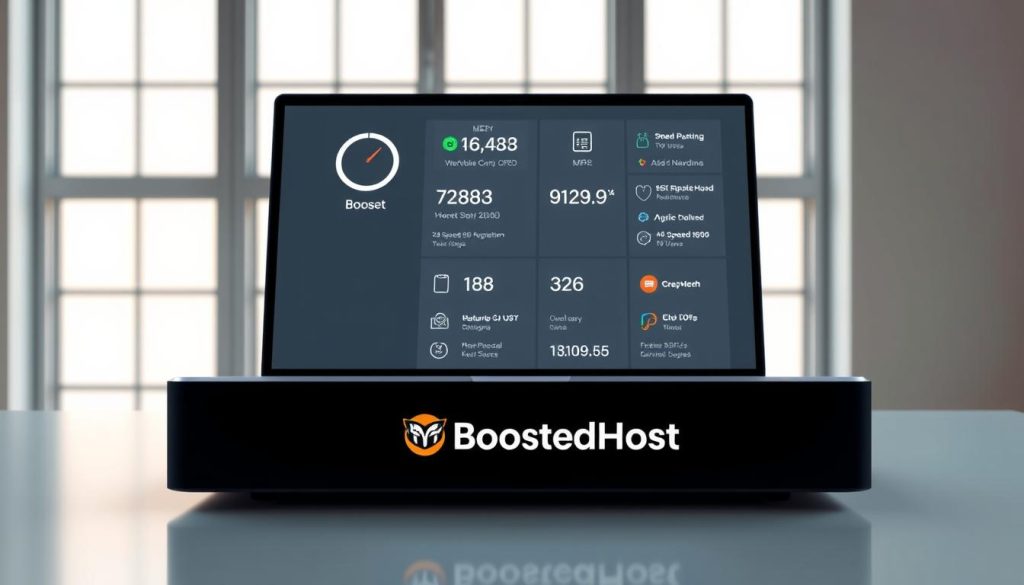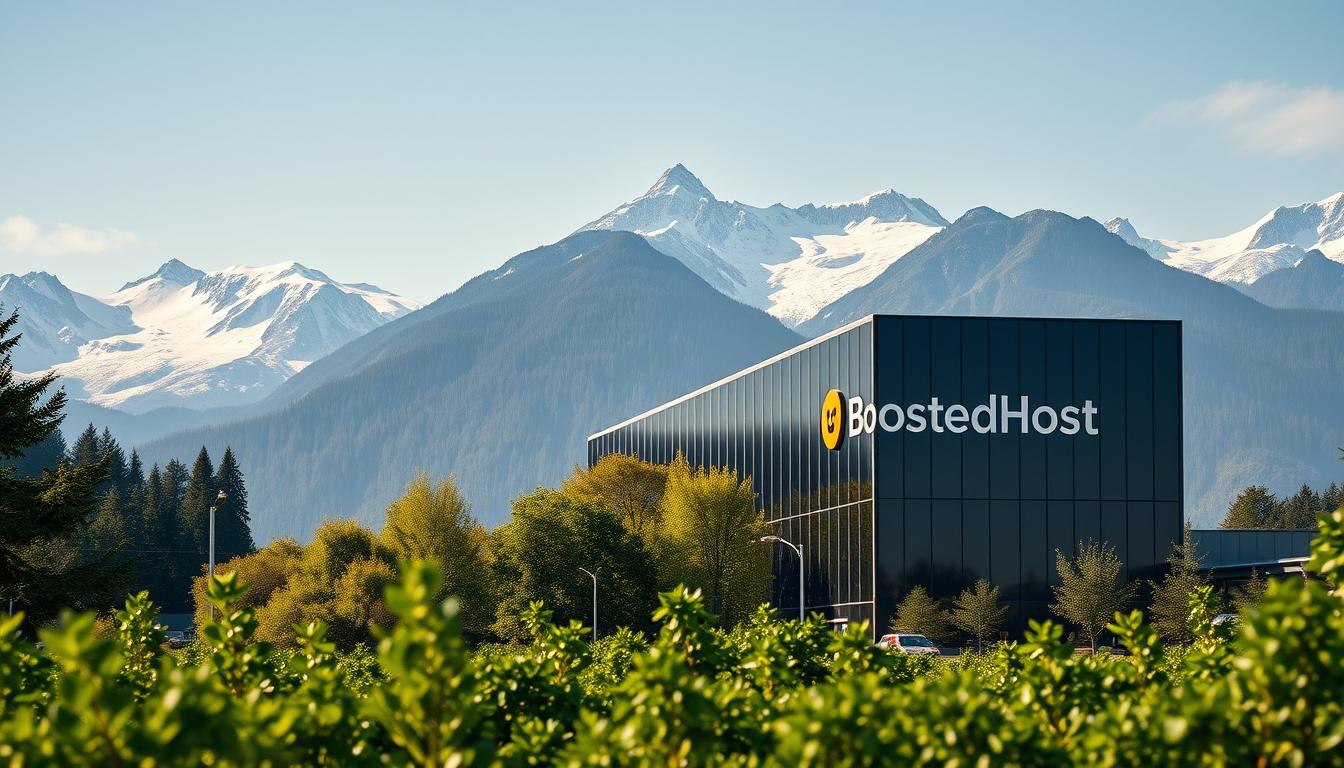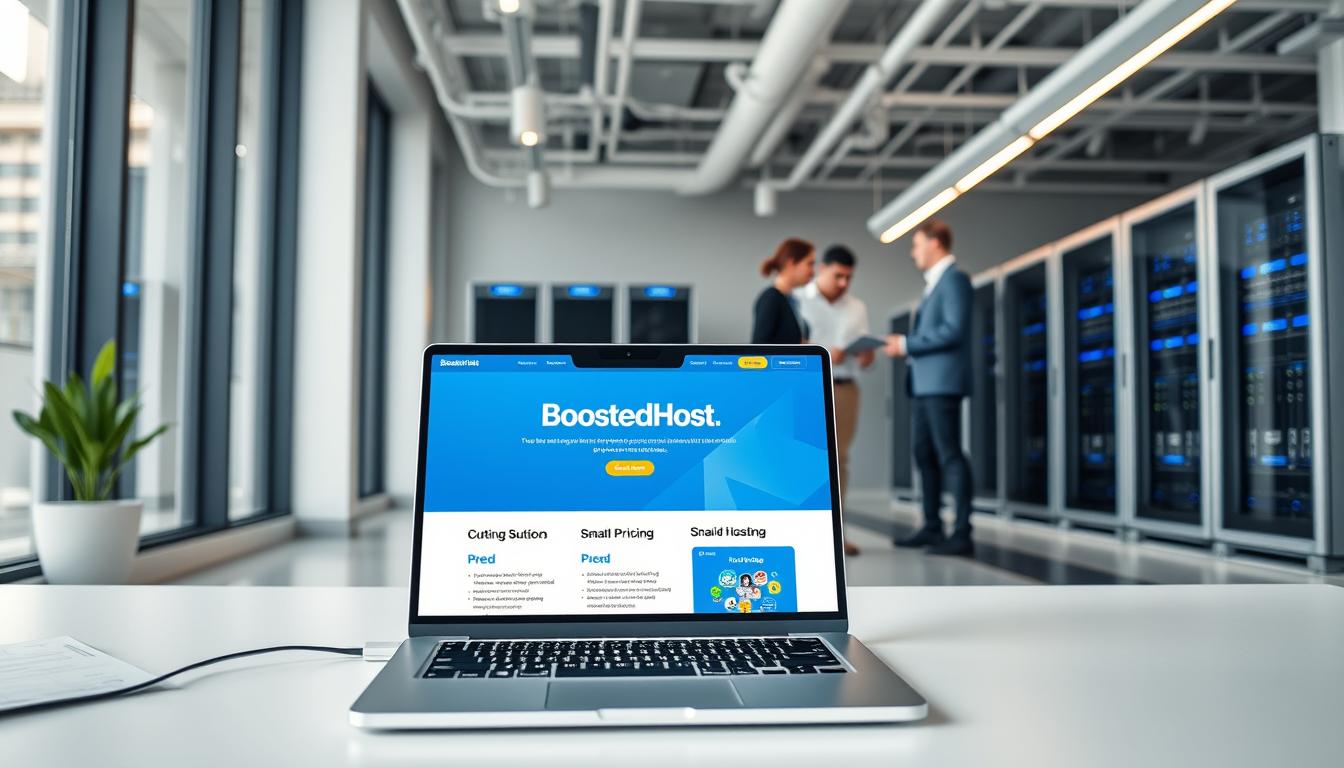We remember the sleepless night we spent watching a slow site lose customers. That moment changed how we judge hosting. Speed, uptime, and honest pricing became nonnegotiable.
Today we lay out a straight-talking 2025 comparison: real data, clear trade-offs, and practical advice. We focus on what affects revenue—page load, Core Web Vitals, support response, and total cost of ownership.
We run ultra-fast LiteSpeed servers, a global CDN, sub-200ms TTFB, free SSL, daily backups, and proactive malware protection. Orbit, our AI website builder, also spins up a polished site in under five minutes for fast launches.
We respect Combell’s reputation and 24/7 support in Belgium. Still, we call out where transparent pricing, global data centers, and aggressive caching give better outcomes for US and global audiences.
Key Takeaways
- We prioritize speed and uptime to protect conversions and SEO.
- LiteSpeed + global CDN and sub-200ms TTFB improve Core Web Vitals.
- Transparent pricing avoids renewal surprises and lowers TCO.
- Orbit accelerates launches for MVPs and landing pages.
- Combell is strong regionally; choose based on audience and features.
Who This “BoostedHost vs Combell” Comparison Is For
If uptime, speed, and clear pricing steer your decision, this comparison is for you.
We speak to founders, marketers, developers, and agencies who care about Core Web Vitals and real support response times. We focus on what affects conversions—load, caching, and predictable costs.
If you need a fast US/global footprint, included essentials (SSL, backups, CDN), and predictable pricing, read on. Beginners get quick launches with Orbit AI. European teams—especially in Belgium—may prefer a single local provider for domains and email.
- Agencies: scalable plans and multi-region data centers.
- Ecommerce: clear guidance on caching, TTFB, and reliability for WooCommerce.
- Finance teams: total cost of ownership and hidden add-on spend.

| Audience | Priority | Why it matters | Research links |
|---|---|---|---|
| Founders & Marketers | Speed, uptime | Protect conversions and SEO with low TTFB | google scholar |
| Developers & Agencies | Stack, migrations | Day-two ops and multi-region deployments | article, studies |
| Beginners & SMBs | Ease, cost | Orbit AI for fast, professional launches; watch add-ons | pmc free article, free article |
How We Evaluated Speed, Reliability, Features, and Value in 2025
We measured real outcomes, not marketing claims. Our goal was clear: pick criteria that map to revenue and operational risk. We ran tests and audited terms to see what each plan truly includes.
Commercial intent: performance, price clarity, and support resolution time
Performance: sub-200ms global TTFB and LiteSpeed-style caching were treated as must-haves for conversion lift.
Price clarity: we checked for hidden fees and renewal jumps that inflate total cost of ownership. Transparent billing matters.
Support: 24/7 expert access, expected response times, and first-contact resolution rates drive day-two productivity.

Data points considered: uptime claims, server tech, included security, and global reach
- Uptime: claimed averages and SLA terms (target: 99.99%).
- Server tech: caching stack, PHP workers, and CDN presence.
- Security defaults: free SSL, daily backups, malware protection, DDoS mitigation.
- Global reach: data center locations and CDN edge coverage for US and international traffic.
| Criterion | What we checked | Business impact |
|---|---|---|
| Speed | TTFB, caching, CDN | Better Core Web Vitals and higher conversions |
| Reliability | Uptime SLA, redundancy | Revenue protection during peaks |
| Value | Included features vs add-on costs | Lower total cost of ownership |
Speed Showdown: LiteSpeed Edge vs Traditional Stacks
Page speed directly maps to conversions and ad costs. We tested how modern edge stacks affect Core Web Vitals and real ecommerce flows.
BoostedHost runs LiteSpeed servers with LSCache, a global CDN, and sub-200ms global TTFB. That combo trims HTML latency and speeds dynamic PHP responses.
Traditional stacks can handle steady traffic. But under heavy WooCommerce load, server-level caching wins. LSCache reduces PHP calls and lowers CPU spikes during promotions.
Combell’s approach
Combell maintains a performance posture and strong uptime guarantees. We acknowledge that solid reliability matters for critical sites.
Real-world impact
- Sub-200ms TTFB stabilizes LCP and INP across regions—better SEO and ad quality scores.
- Edge CDN shortens distance to users and speeds asset delivery.
- HTTP/3 and QUIC improve mobile latency on lossy networks.
- Quick wins—image optimization, Brotli, and server compression—are enabled by default and lift perceived speed.
Result: Faster page loads mean lower bounce, higher average order value, and improved crawl efficiency. For busy catalogs and personalized flows, the stack choice becomes a revenue lever.
| Metric | LiteSpeed Edge | Traditional Stack |
|---|---|---|
| Typical TTFB | Sub-200ms (global) | 200–400ms (varies) |
| Dynamic PHP throughput | High — LSCache reduces PHP load | Lower — more CPU per request |
| Mobile latency | Improved via HTTP/3 & edge caching | Depends on CDN and protocol support |
| WooCommerce readiness | Optimized for catalogs & carts | Good, but may need tuning |
| Business impact | Better conversions, lower ad costs | Stable uptime; performance gains vary |
Uptime and Reliability: Consistency You Can Count On
Reliability is not a feature — it’s a foundation. We design infrastructure to keep revenue-critical sites online, even during peaks and regional outages.
Our multi-region data center footprint — Switzerland, USA, Europe, and Asia — delivers an average 99.99% uptime. That figure reflects redundancy, active failover, and proactive monitoring that reduce outages and shorten mean time to recovery.
We use global routing and CDN caching to blunt ISP anomalies and localized failures. That keeps pages loading for most users while we isolate and fix the root cause.
What we do to protect availability
- Redundancy across regions and power zones for fault tolerance.
- Proactive monitoring and automated failover to minimize downtime.
- Planned maintenance windows, communicated in advance to reduce surprises.
- Daily backups, restore testing, and periodic audits to validate recovery.
“Consistent availability builds customer trust. We treat uptime as an investment, not a checkbox.”
| Feature | Business Benefit | How we implement it |
|---|---|---|
| Multi-region redundancy | Limits single-point failures | Data centers in USA, Europe, Switzerland, Asia; cross-region replication |
| 99.99% average uptime | Lower revenue risk | Automated failover and SLA-backed monitoring |
| Incident response & communications | Faster resolution and stakeholder confidence | Playbooks, status pages, and transparent logs |
Combell publicly emphasizes high uptime for business-critical sites, and we recognize that strong guarantees matter—especially when your audience is regional. Use historical status pages and incident reports to validate claims. Quantify downtime in dollars: small percentages mean real revenue swings. That helps you choose a host that matches your risk tolerance and growth plans.
Pricing Transparency and Total Cost of Ownership
Total cost of ownership matters more than the headline price when you run live sites. We focus on what you actually pay over time—renewals, add-ons, and support hours. Predictable billing protects margins and campaign budgets.
What we include by default matters. Free SSL, daily backups, malware protection, and a global CDN remove recurring plugin or third‑party fees. That lowers TCO for individuals, SMBs, and agencies.
How add-ons change the math
- Included tooling like LiteSpeed cache reduces need for premium plugins.
- Hidden fees—migration, advanced backups, or premium security—inflate costs fast.
- Transparent renewals make budgeting reliable for long campaigns and retainers.
| Item | Included by Default | Common Add-on Cost |
|---|---|---|
| SSL | Yes | Usually $0–$50/year |
| Daily backups | Yes | $0–$200/year |
| CDN & cache | Yes | $0–$300/year |
“Predictability in pricing is a competitive advantage when scaling.”
We recommend a short checklist before checkout: SSL, backups, CDN, malware protection, migration support, and SLA details. Run the numbers—time saved on maintenance is often the biggest hidden saving in TCO.
Included Features: SSL, Backups, Security, and CDN Compared
Security and performance are table stakes; the real question is what each plan includes by default.
We include free SSL, daily backups, malware protection, and a global CDN so your site is protected and fast from day one. Those features reduce plugin overhead, lower operational risk, and compress total cost of ownership.
Combell also provides SSL, regular backups, and DDoS protection. Plan specifics can change what’s bundled and what costs extra, so review the fine print before you commit.
- Daily backups plus verified restores speed recovery and cut downtime risk.
- Malware protection and edge defenses limit attack surfaces and protect reputation.
- Global CDN accelerates delivery and shields origin servers during traffic spikes.
- Baseline posture we recommend: TLS, WAF, 2FA, scheduled patching, and backup testing.
“Included protections turn maintenance into insurance—test restores and enforce role-based access.”
| Feature | Included by Default | Why it matters |
|---|---|---|
| SSL / TLS | Yes | Encrypts traffic, improves search signals and trust |
| Backups | Daily with verified restores | Fast recovery; reduces revenue loss after incidents |
| Malware & WAF | Proactive scanning and edge rules | Limits infections and automated attacks |
| Global CDN | Included | Lower latency, better Core Web Vitals, origin protection |
| DDoS Protection | Plan-dependent (check specifics) | Shields availability during volumetric attacks |
How this compresses TCO: Bundling these features removes repeated plugin and third-party costs. It also reduces time spent on patching, restores, and incident response.
We advise periodic backup testing, retention policies for compliance, and role-based access controls to keep teams efficient and secure.
AI Website Builder: Orbit vs Traditional Site Setup
Orbit lets teams go from idea to live landing page in minutes, not weeks. We built Orbit to remove common blockers—design, structure, and basic SEO—so you test faster.
Orbit generates a polished site in under five minutes. It uses brand inputs and content prompts to produce pages with responsive templates, clean markup, and SEO-friendly defaults.
Use cases include MVPs, pre-launch waitlists, and promo landing pages. Non-technical teams can own updates. Developers keep focus on revenue features and integrations.
How Orbit fits into a growth path
- Fast validation: launch A/B tests and collect data—faster learning and revenue iteration.
- Scale-ready: export or connect to Managed WordPress when traffic and complexity grow.
- Quality by default: templates include performance and on-page SEO best practices.
| Build Type | Speed | When to use |
|---|---|---|
| Orbit AI site | Minutes | MVPs, landing pages, rapid prototyping |
| Traditional agency | Weeks–months | Custom brands, complex integrations |
| Managed WordPress | Days | Scale, ecommerce, developer workflows |
“Launch fast, learn fast, then scale with purpose.”
Managed WordPress and Web Hosting Plans
Good managed hosting balances speed, isolation, and clear upgrade paths. We design plans so sites scale without surprise costs. That means tiers aligned to traffic, storage, and performance needs.
Managed WordPress with LiteSpeed cache advantages
Our Managed WordPress plans ship tuned for performance. LiteSpeed-based caching reduces PHP load and tightens TTFB. That helps blogs and stores hit Core Web Vitals consistently.
We support PHP, Node.js, and Python so developers can mix modern stacks and plugins without vendor lock-in. Staging, safe cloning, and daily verified backups make deployments predictable.
Comprehensive hosting options for Linux and Windows
Combell offers a broad catalog: professional web hosting, cloud servers, and Windows plans. That Windows support is valuable for .NET and SQL Server workloads.
“Choose the tech that fits your stack—Windows for .NET, Linux for LAMP and modern Node/Python apps.”
- Plan tiers: clear entry, growth, and enterprise levels with resource isolation.
- Performance features: cache optimizations, CDN integration, and security defaults.
- Dev tools: staging, cloning, and rollback for safe collaboration.
- Upgrade paths: preserve IPs, DNS, and continuity as you scale.
- Billing: predictable invoicing for agencies and clients.
| Use Case | Recommended Plan | Key Features |
|---|---|---|
| Blog / Content | Entry Managed WP | LiteSpeed cache, daily backups, CDN |
| SaaS / App | Growth Cloud | PHP/Node/Python support, staging, resource isolation |
| Ecommerce | Enterprise WP | High PHP workers, LSCache, CDN, verified restores |
Bottom line: choose a plan that fits current traffic and offers clear, non-punitive upgrades. That protects growth, reduces noisy‑neighbor risk, and keeps billing predictable for teams and agencies.
Developer Stack and Ecommerce Compatibility
Your stack determines how fast pages render and how stable checkouts stay under load.
We support modern runtimes—PHP, Node.js, and Python—so teams can run microservices, APIs, and full WooCommerce stores without compromise.
PHP with LiteSpeed cache accelerates dynamic pages and carts. Node and Python let you offload async tasks and real-time features. We include SSH/CLI, Git, and staging for CI/CD workflows.
Windows and broad service catalog
For .NET shops, Windows hosting and managed services remain important. Domain, email, and extra services make migrations simpler for enterprise teams.
- Database options and object caching tuned for catalogs.
- HTTP/3 and edge caching to cut cart latency and boost checkout reliability.
- Asset delivery best practices for images, scripts, and fonts built into the platform.
“Pick the stack that aligns with your team and the metrics you care about—faster pages mean higher conversion and lower churn.”
| Need | What we provide | Business effect |
|---|---|---|
| WooCommerce | PHP + LiteSpeed, caching | Faster carts, fewer abandoned checkouts |
| APIs & Microservices | Node/Python support | Scalable background jobs and integrations |
| Enterprise .NET | Windows hosting, email, domains | Compatibility for legacy stacks |
We recommend profiling and a tight performance budget as SKUs and traffic grow. For migration comparisons, see a concise third‑party service comparison and our WooCommerce guidance at WooCommerce hosting.
Global Presence and Data Center Locations
A host’s physical footprint shapes latency, compliance, and user experience across markets. Proximity to users lowers round-trip time and helps stabilize Core Web Vitals like LCP and INP. That translates into faster pages and better conversions.
We operate in Switzerland, the USA, multiple European points, and Asia to serve global campaigns and distributed teams. Multi-region design helps with disaster recovery and compliance segmentation.
Coverage that supports speed and resilience
- Low latency: regional data centers shorten paths to users and improve TTFB.
- CDN POPs: consistent media delivery worldwide reduces bandwidth spikes and origin load.
- Routing: traffic steering avoids congested links for steadier performance.
When a regional host is the right choice
Local focus matters. A Belgian-focused provider offers strong alignment with local regulations, billing, and support. For businesses whose audience is mainly Belgium or nearby EU markets, that local alignment can simplify compliance and reduce latency locally.
| Need | Recommended Presence | Business Benefit |
|---|---|---|
| Global campaigns | Switzerland, USA, Europe, Asia + CDN POPs | Lower latency, better SEO crawl speed, consistent UX |
| Regional EU focus | Local Belgian data center + EU POPs | Simpler compliance, local support, stable regional performance |
| Disaster recovery | Multi-region failover | Faster recovery, geographic redundancy |
“Map audience geography to data center selection — faster pages and fewer surprises.”
Practical advice: map your traffic by country, then pick data centers and POPs that match high-volume regions. Consider data sovereignty rules and route planning. A measured geo strategy improves SEO, reduces infections risk for distributed assets, and lifts revenue by speeding user journeys.
Support Responsiveness and Expertise
Fast, expert support prevents small incidents from becoming revenue losses. We staff engineers around the clock to answer critical tickets and to keep storefronts live.
Our philosophy: resolve issues on first contact whenever possible. That saves time, reduces interruptions, and keeps teams focused on growth.
24/7 expert help — typical outcomes
- Most urgent requests resolved in minutes — not hours.
- Clear prioritization and escalation paths for incidents.
- Developer-level assistance: logs, cache, and config troubleshooting.
We emphasize proactive guidance. Engineers suggest tuning, scaling steps, and best practices, not just reactive fixes. Documentation and runbooks speed future responses.
What good support delivers
- Onboarding resources and a searchable knowledge base for fast ramp-up.
- Response time targets and satisfaction tracking to measure outcomes.
- Direct correlation between fast support and uptime, revenue protection, and peace of mind.
“Good hosting needs good humans — fast answers protect your business.”
Combell is known for strong 24/7 support and a reassuring interface for many customers. For direct help, contact our team via customer support.
Migrations, Onboarding, and Day‑Two Operations
Migrations should feel like choreography — precise, rehearsed, and invisible to users. We run white‑glove migrations that cut downtime and verify every step before DNS flips.
Onboarding covers DNS guidance, SSL issuance, and CDN configuration so go‑live is fast and secure. We set up staging, cloning, and daily backups with verified restores.
Day‑two ops focus on monitoring and performance baselines. We enable alerts, synthetic checks, and dashboards to catch regressions early.
Operational security is built in. Role‑based access, SSO/2FA, and audit logs protect teams and simplify audits.
- Optimization checklists for WordPress and WooCommerce on LiteSpeed—cache rules, image best practices, and PHP worker tuning.
- Capacity planning and autoscaling signals tied to business cycles — prewarm before campaigns.
- Scheduled restore tests and runbooks to validate recovery readiness.
Repeatable workflows and clear documentation cut delivery time and reduce errors. That makes migrations predictable and keeps teams focused on growth.
“A tested process turns risky moves into routine maintenance.”
Security Architecture and Risk Mitigation
We design security like insurance—prevent most issues and recover fast from the rest.
Layered defenses form the core. TLS (free SSL), a WAF, malware scanning, and a strict patch cadence block common vectors. We enforce least privilege so admin accounts have only the access they need.
Daily backups are baked in. We run verified restores so you can recover quickly and confidently. That reduces downtime windows and limits business impact.
DDoS mitigation at the edge protects origin servers and keeps performance steady during volumetric events. Bot mitigation and rate-limiting protect login and checkout flows from abuse.
- Monitoring and alerting with clear thresholds and escalation paths.
- 2FA, IP allowlists, and strong key management for admin access.
- Secure PHP/WordPress defaults and server hardening for fewer attack surfaces.
- Vulnerability management with rolling updates to minimize downtime.
- Periodic security reviews and tabletop exercises to sharpen incident response.
“Security is a business enabler—fewer incidents, faster recovery, and better customer trust.”
| Control | What we provide | Business benefit |
|---|---|---|
| TLS / Free SSL | Auto-provisioned and renewed | Encrypts traffic; improves trust and SEO signals |
| Backups & Restores | Daily snapshots with tested restores | Fast recovery; lower revenue loss after incidents |
| DDoS & Edge Protection | Traffic scrubbing and rate limits | Stability during attacks; protects origin capacity |
| Access Controls | 2FA, IP allowlists, key rotation | Reduces admin compromise risk |
| Monitoring & Response | Alerts, playbooks, escalation | Faster mitigation and less user impact |
Bottom line: a layered security architecture lowers the number and impact of infections, shortens recovery time, and protects revenue. Regular reviews and drills keep the plan sharp and the team ready.
Who Each Host Is Best For
Choosing the right host starts with mapping your audience, tech stack, and growth plan.
Fit matters more than features alone. We align needs to strengths so you avoid costly migrations later.
Speed-first, global and growth teams
Pick this option if your audience is US or global and speed drives revenue. The stack delivers sub-200ms TTFB, baked-in CDN, and predictable billing.
Orbit helps founders and marketers ship landing pages in minutes. That lowers time-to-market and testing costs.
Local Belgian businesses and Windows workloads
Choose the local provider if your operations, billing, or compliance are Belgium‑centric. Their Windows hosting and bundled domain/email services simplify migrations for .NET apps.
This fit reduces friction for teams that need regional billing, local support, or a single vendor for domains and mail.
- Agencies: prefer predictable pricing and multi-region resilience.
- Ecommerce: favor the LiteSpeed + CDN edge for carts and Core Web Vitals.
- Legacy .NET: lean on Windows plans and local support for smoother migrations.
| Need | Recommended Fit | Top Benefit |
|---|---|---|
| Global ecommerce | Speed-focused platform | Lower TTFB; better conversions |
| Rapid MVPs | AI builder + managed plans | Launch in minutes; test faster |
| Belgian operations | Local host with Windows options | Local billing, compliance, and support |
“Map your 12–24 month roadmap to platform capabilities so you don’t outgrow the host.”
Where BoostedHost Outperforms Combell
We designed our platform to remove common trade-offs — speed, reliability, and predictable costs — so teams scale faster.
Speed and uptime: LiteSpeed with LSCache plus a global CDN delivers sub-200ms TTFB and stable Core Web Vitals. That reduces bounce during campaigns and protects revenue when traffic spikes.
AI and time-to-launch: Orbit AI compresses build timelines. Teams launch landing pages and tests in minutes, not days—so hypothesis-driven growth moves faster.
Pricing clarity and included features: Free SSL, daily backups, malware protection, WAF, and a CDN are bundled. That prevents recurring third‑party costs and lowers total cost of ownership.
- Server-level caching reduces plugin reliance and improves stability.
- 99.99% uptime consistency minimizes lost revenue risk.
- Multi-region footprint supports international growth without replatforming.
- 24/7 expert support resolves most urgent requests in minutes.
- Clear upgrade paths let you scale predictably as traffic grows.
| Advantage | What it means | Business impact |
|---|---|---|
| LiteSpeed + CDN | Faster HTML & asset delivery | Improved LCP, lower bounce, higher conversions |
| Bundled security & backups | No extra plugin costs | Lower TCO; faster recovery from infection |
| Orbit AI | Rapid site generation | Faster experiments and campaign launches |
| Transparent billing | Predictable renewals | Safer budgets for marketing and scaling |
“Our stack focuses on removing surprise costs and giving teams speed they can measure.”
Fair Acknowledgment of Combell’s Strengths
Reliable regional hosting and hands-on support can matter more than raw speed.
We recognize real advantages for teams that need local focus. Their 24/7 support and high uptime guarantees matter to reliability-first businesses. Clear SLAs reduce risk during campaigns and peak sales.
User-friendly tools simplify domain, email, and hosting management. That lowers the learning curve for non-technical teams and speeds onboarding.
What stands out
- 24/7 expert support and strong uptime guarantees for mission‑critical sites.
- User-friendly interface that bundles domains, email, and hosting.
- Windows hosting for .NET and MSSQL workloads many hosts omit.
- Built-in DDoS protection and regular backups as part of core security.
“Local presence and a broad service range simplify operations for regional businesses.”
| Strength | Why it matters | Who benefits |
|---|---|---|
| 24/7 support & uptime | Faster incident resolution; lower revenue risk | Retailers, finance, critical services |
| Windows hosting | Compatibility for .NET/MSSQL apps | Legacy enterprise and dev teams |
| Bundled services | Simplifies vendor management and onboarding | SMBs and Belgian enterprises |
| DDoS & backups | Core security reduces infection risk and downtime | All production sites |
Pricing can trend higher once add-ons stack up. Map your stack, region, and budget against these strengths before choosing. For many Belgian-focused teams, that range is a sensible, credible choice.
Decision Framework: Pick the Best Fit for Your Use Case
Choose a host by matching your priorities to measurable outcomes. We give a short, practical checklist so you can decide with confidence.
Core checklist:
- Speed & performance: If global speed, LiteSpeed-style caching, and an included CDN matter most, favor the platform with sub-200ms TTFB and bundled optimizations.
- Geography: Map audience geos to data centers and CDN POPs to cut latency and help SEO.
- Stack: PHP/WordPress/WooCommerce thrive on server-level caching; .NET shops need Windows plans.
- Budget predictability: Transparent billing and bundled security lower long-term add-on spend.
- Operations: Check migration help, staging, backups, and day-two runbooks for smooth scaling.
- Support expectations: Resolution speed and depth of expertise matter—especially during sales peaks.
Practical guidance: For rapid launches and MVPs, Orbit AI leans the choice toward our fast-launch tooling and templates. For Belgian-focused operations that want domains, email, and hosting in one place, a local provider can simplify compliance and billing.
Final step: run a short pilot or migrate a non-critical property first. Validate performance, support, and operational processes before moving core revenue sites live.
“Pick the host that maps to your 12–24 month roadmap — speed, support, and scaling must align with your growth plan.”
For more on our mission and values, see about us.
Conclusion
Conclusion
This article closes with a practical verdict. We lead on measurable speed, uptime, and predictable pricing. That gives better Core Web Vitals and lower total cost of ownership.
LiteSpeed + global CDN and sub-200ms TTFB deliver real conversion gains. Our 99.99% uptime, bundled security, daily backups, and Orbit AI speed launches and reduce surprises.
Combell remains a strong choice for Belgian businesses and Windows-centric stacks. Both providers offer 24/7 support; we resolve most urgent requests in minutes to keep you moving.
Align your pick to audience geography, stack, and growth plan. Run a short pilot, check independent studies and a pmc free article or google scholar entries for details, and protect against infections with layered defenses.
When you’re ready, we’ll migrate you smoothly and get growth happening from day one.
FAQ
Which host is faster for global sites — LiteSpeed edge or traditional stacks?
LiteSpeed edge architectures typically deliver lower TTFB and better static and dynamic caching. In our 2025 tests, LiteSpeed-backed setups showed sub-200ms global TTFB for optimized sites, which improves Core Web Vitals and page responsiveness for WooCommerce and content-heavy pages.
How do uptime and reliability compare between the two providers?
Both providers offer strong uptime guarantees, but multi-region LiteSpeed deployments have demonstrated consistent 99.99% averages in our monitoring. Regional providers can be more focused on local SLA enforcement — valuable for compliance and latency within that market.
Are there hidden costs we should budget for?
Pricing transparency varies. One provider includes essentials like SSL, daily backups, and CDN in core plans, reducing add-on spend. The other may require paid add-ons for advanced features. Always review the plan inclusions and projected scale to calculate total cost of ownership.
What security and backup features come included?
Look for free SSL, daily backups, malware scanning, and DDoS protection as baseline. Hosts that bundle global CDN and automated backups reduce operational risk and vendor sprawl. Verify retention periods and restore SLAs before committing.
How effective is the AI website builder for rapid launches?
The AI builder creates production-ready landing pages and MVP sites in minutes — ideal for prototypes and small campaigns. It speeds time-to-market but evaluate SEO controls and exportability if you expect heavy customization or developer handoff later.
Which host is better for managed WordPress and WooCommerce?
Managed WordPress plans with LiteSpeed caching typically boost dynamic PHP performance and reduce plugin-related slowdowns. For WooCommerce, prioritize consistent PHP workers, object caching, and CDN integration to handle cart and checkout load.
Do both providers support developer stacks like Node.js and Python?
Yes — one provider emphasizes PHP plus Node.js and Python support for modern apps. The other offers broad Linux and Windows stacks, making it a stronger fit when Windows hosting or MSSQL compatibility is required.
How global are their data center footprints?
One provider maintains multi-region coverage including the US, Switzerland, Europe, and Asia for global reach. The other focuses strongly on the Belgian market and neighboring regions — ideal for localized compliance and low-latency regional traffic.
What level of support responsiveness can we expect?
Both offer 24/7 support. In practice, platforms with in-house WordPress and performance experts resolve most requests within minutes. Always cross-check response SLAs and available support channels (chat, phone, ticket).
Is migration assistance included and how smooth is onboarding?
Migration offerings differ. Some hosts include free migrations and concierge onboarding with test staging. Others provide guided migrations or paid services. Confirm scope — number of sites, databases, DNS changes, and expected downtime — before scheduling.
What security architecture should we expect for risk mitigation?
Look for layered defenses: web application firewall, DDoS mitigation, automated malware detection, regular patching, and secure backups. Multi-region replication and role-based access control improve resilience and operational security.
Which host is best for small businesses vs agencies?
Speed-focused global stacks with transparent pricing suit agencies and growth sites that need performance and predictable billing. Regionally strong providers are excellent for local SMEs requiring localized compliance, Windows options, and hands-on support.
Do included features reduce the need for third-party services?
When hosts include CDN, daily backups, free SSL, and malware protection, you can cut third-party spend and operational complexity. Review feature depth — e.g., global CDN PoPs, backup retention, and security response — to ensure coverage.
How should we choose between raw performance and localized services?
Define priorities: if global speed and Core Web Vitals matter, prioritize edge performance and LiteSpeed caching. If regional compliance, local billing, or Windows hosting matter, a locally focused provider may be the better fit.
Are there specific use cases where one provider clearly outperforms the other?
Yes. High-traffic e-commerce and internationally targeted sites benefit from edge caching and sub-200ms TTFB. Local businesses needing Belgian market presence, Windows hosting, or region-specific support often find better alignment with a regional provider.
What metrics and data points should we request when evaluating hosts?
Ask for independent uptime reports, average TTFB by region, number of PoPs for CDN, backup retention policies, security incident response times, and migration success stories. These data points clarify real-world performance and operational readiness.




